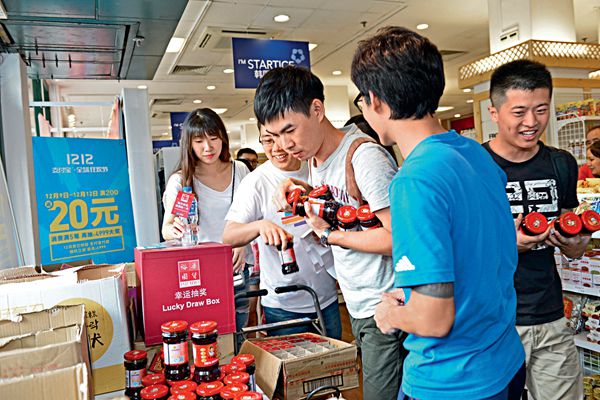Global Online Purchasing Fever
China Today by LUO LAN, February 8, 2017 Adjust font size:
Online and Offline Service
Along with development of e-business, an Omni-channel sales model integrating online and offline service is now available – an innovation insiders believe will prove an irresistible trend. For the next two decades, e-business will undoubtedly combine with offline service and logistics.
|
|
|
Chinese products such as Laoganma are in high demand by overseas Chinese in Singapore. |
Many merchants are already taking the first steps in this direction. In contrast with earlier years, in 2016 Alibaba focused on both online and offline services, linking more than one million online stores and offering digitization to more than 100,000 physical stores. JD.com also cooperated with Walmart in the lead-up to last year’s online shopping festival. During Black Friday in 2016, the Friendship&Apollo Group launched its Omni-channel mode offering online shoppers products from 50 countries and regions. The group has opened a dozen overseas shopping experience centers for local consumers.
According to advisory body IDC, during the 2016 Double 11 Festival, the main achievement of Omni-channel distribution became clear; further meshing supply chains, logistics and users appreciably eases antagonism between store retail and e-business.
This integration is happening nationwide. Hangzhou’s Cross-border Trading Town includes national and themed pavilions from Oceania, Europe, Asia, and America. They offer thousands of popular items, from cosmetics, healthcare products, and food items to mother and baby products, household appliances, and garments. Consumers can try them out there and then, and buy these taxable commodities either directly from the store or online. Products are delivered from bonded warehouse, so covering the entire process from offline experience to online shopping.
Experts believe that online-offline integration is the future of commercial development. It can also promote city and countryside integration by giving full play to each one’s respective advantages, achieve better service, lower cost, higher efficiency, and so better satisfy consumer demands and gradually equalize the uneven development of China’s e-commerce. In 2016, the government also introduced e-commerce to rural areas, communities and small to medium-sized cities in efforts to hasten integration of online and offline development.
LUO LAN is a reporter at the People’s Daily Overseas Edition.
